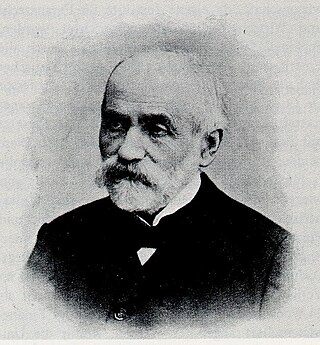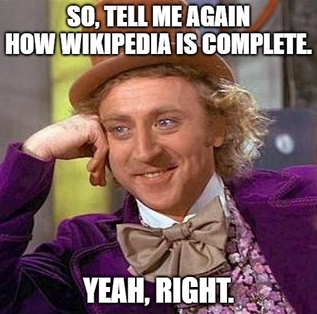Condescension or Condescendence is a form of incivility wherein the speaker displays an attitude of patronizing superiority or contempt.
Condescension "is associated with a patronizing attitude, and with other negative words such as divisive, heartless, arrogant, high-handed, [and] dictatorial". [1] The use of condescending language "can derail conversations and, over time, disrupt healthy communities". [2]
The meaning of the word has evolved over time. In the eighteenth century, condescension or condescending denoted a positive characteristic of a person of superior breeding, class, or some other superior set of characteristics lowering themselves to speak kindly to an inferior. By the nineteenth century, the word had developed a negative connotation, as evidenced by Charles Dickens in Dombey and Son , where a character is described in contrasting terms as "a little condescending, but extremely kind". [1] "In eighteenth-century prose, it is therefore common to find the word condescension qualified by adjectives such as generous, good, kind, humble, and particularly affable. This last word shows that condescension had become an index not only of ethical practice, but also of personality". [3]
This changed in the Victorian era, when "the belief in a constructive condescension largely fell away, and the word itself (with exceptions) was given over to its negative connotations. Condescension came primarily to signify self-promotion at another's cost; to condescend was to assert one's own superiority in a way that degraded others". [3]

Ethnocentrism in social science and anthropology—as well as in colloquial English discourse—means to apply one's own culture or ethnicity as a frame of reference to judge other cultures, practices, behaviors, beliefs, and people, instead of using the standards of the particular culture involved. Since this judgment is often negative, some people also use the term to refer to the belief that one's culture is superior to, or more correct or normal than, all others—especially regarding the distinctions that define each ethnicity's cultural identity, such as language, behavior, customs, and religion. In common usage, it can also simply mean any culturally biased judgment. For example, ethnocentrism can be seen in the common portrayals of the Global South and the Global North.
In historiography, periodization is the process or study of categorizing the past into discrete, quantified, and named blocks of time for the purpose of study or analysis. This is usually done in order to understand current and historical processes, and the causality that might have linked those events.
A connotation is a commonly understood cultural or emotional association that any given word or phrase carries, in addition to its explicit or literal meaning, which is its denotation.

A circular definition is a type of definition that uses the term(s) being defined as part of the description or assumes that the term(s) being described are already known. There are several kinds of circular definition, and several ways of characterising the term: pragmatic, lexicographic and linguistic. Circular definitions are related to Circular reasoning in that they both involve a self-referential approach.

A barbarian is a member of a people who are not part of one of the ancient 'great nations'. The designation is usually applied as a generalization based on a popular stereotype; barbarians can be members of any nation judged by some to be less civilized or orderly but may also be part of a certain "primitive" cultural group or social class both within and outside one's own nation.

Fop became a pejorative term for a man excessively concerned with his appearance and clothes in 17th-century England. Some of the many similar alternative terms are: coxcomb, fribble, popinjay, dandy, fashion-monger, and ninny. Macaroni was another term of the 18th century more specifically concerned with fashion.

Hottentot is a term that was historically used by Europeans to refer to the Khoekhoe, the indigenous nomadic pastoralists in South Africa.

Pity is a sympathetic sorrow evoked by the suffering of others. The word is comparable to compassion, condolence, or empathy. It derives from the Latin pietas. Self-pity is pity directed towards oneself.
Language change is the process of alteration in the features of a single language, or of languages in general, across a period of time. It is studied in several subfields of linguistics: historical linguistics, sociolinguistics, and evolutionary linguistics. Traditional theories of historical linguistics identify three main types of change: systematic change in the pronunciation of phonemes, or sound change; borrowing, in which features of a language or dialect are introduced or altered as a result of influence from another language or dialect; and analogical change, in which the shape or grammatical behavior of a word is altered to more closely resemble that of another word.

Bardolatry is excessive admiration of William Shakespeare. Shakespeare has been known as "the Bard" since the eighteenth century. One who idolizes Shakespeare is known as a bardolator. The term bardolatry, derived from Shakespeare's sobriquet "the Bard of Avon" and the Greek word latria "worship", was coined by George Bernard Shaw in the preface to his collection Three Plays for Puritans published in 1901. Shaw professed to dislike Shakespeare as a thinker and philosopher because Shaw believed that Shakespeare did not engage with social problems as Shaw did in his own plays.

In 1671 an argument broke out in the French Royal Academy of Painting and Sculpture in Paris about whether drawing or color was more important in painting. On one side stood the Poussinists who were a group of French artists, named after the painter Nicolas Poussin, who believed that drawing was the most important thing. On the other side were the Rubenists, named after Peter Paul Rubens, who prioritized color. There was a strong nationalistic flavour to the debate as Poussin was French but Rubens was Flemish, though neither was alive at the time. After over forty years the final resolution of the matter in favor of the Rubenists was signalled when Antoine Watteau's The Embarkation for Cythera was accepted as his reception piece by the French Academy in 1717. By that time the French Rococo was in full swing.
Gay is a term that primarily refers to a homosexual person or the trait of being homosexual. The term originally meant 'carefree', 'cheerful', or 'bright and showy'.

The sociology of jealousy deals with cultural and social factors that influence what causes jealousy, how jealousy is expressed, and how attitudes toward jealousy change over time.

Machismo is the sense of being "manly" and self-reliant, a concept associated with "a strong sense of masculine pride: an exaggerated masculinity". Machismo is a term originating in the early 1930s and 1940s best defined as having pride in one's masculinity. While the term is associated with "a man's responsibility to provide for, protect, and defend his family", machismo is strongly and consistently associated with dominance, aggression, grandstanding, and an inability to nurture. The correlation to machismo is found to be deeply rooted in family dynamics and culture.

Moskal is a designation used for the residents of the Grand Duchy of Moscow from the 12th to the 15th centuries.
Nosism, from Latin nos 'we', is the practice of using the pronoun we to refer to oneself when expressing a personal opinion.
In the English language, the word negro is a term historically used to denote people considered to be of Black African heritage. The word negro means the color black in both Spanish and in Portuguese, where English took it from. The term can be construed as offensive, inoffensive, or completely neutral, largely depending on the region or country where it is used, as well as the time period and context in which it is applied. It has various equivalents in other languages of Europe.

Mansplaining is a pejorative term meaning "(for a man) to comment on or explain something, to a woman, in a condescending, overconfident, and often inaccurate or oversimplified manner".

"Condescending Wonka" is an Internet meme based on the 1971 Willy Wonka & the Chocolate Factory film directed by Mel Stuart. The meme emerged in 2011 and few years later was described as one of the most popular Internet memes, usually used to convey sarcasm and a patronizing attitude. The meme is composed of a still screenshot from the movie, showing the character Willy Wonka, accompanied by a short sentence that varies by context of the meme.